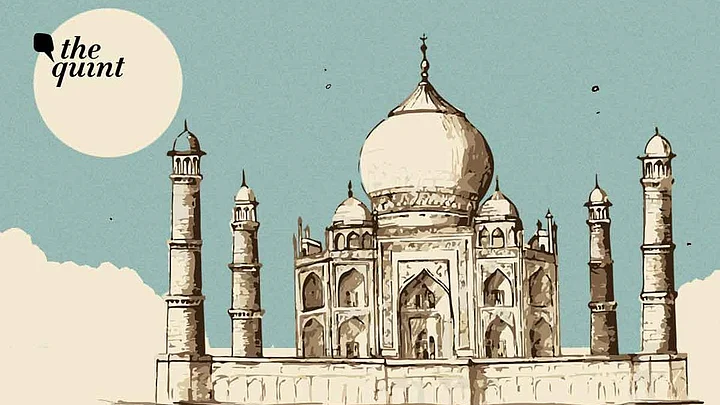The Allahabad High Court on Thursday, 12 May, rejected a BJP leader's petition to open 22 doors of the Taj Mahal.
The petition had sought the court's direction to the Archaeological Survey of India (ASI) to open the doors of 22 locked rooms inside the Taj Mahal so that the alleged controversy surrounding the "history of Taj Mahal" could be put to rest.
The petitioner, Dr Rajneesh Singh, the media incharge of the Bharatiya Janata Party (BJP) in Ayodhya, stated that he had filed many RTIs and that he got to know about the several locked rooms in the Taj Mahal, adding that the authorities told him that entry to those rooms was barred because of security reasons, Bar and Bench reported.
He added, "If there are many hidden things under the Taj Mahal that should be in public (sic)."
A bench of Justices DK Upadhyay and Subhash Vidyarthi, while hearing the matter, told the petitioner, "If they have said that rooms are closed because of security reasons, then that's the information. If you're not satisfied, then challenge it."
The high court further said to Singh, "Please enroll yourself in MA, then go for NET, JRF and if any university denies you research on such a topic, then come to us."
When the petitioner insisted on being allowed to go to "those rooms", the court remarked, "Tomorrow will you come and ask to go to the chambers of Honourable Judges?"
This comes a day after BJP's Lok Sabha MP from Rajsamand constituency of Rajasthan Diya Kumari claimed that the land on which the Taj Mahal stands belonged to Jaipur's ruler Jai Singh and that Mughal emperor Shah Jahan had acquired the same from Singh.
Earlier, Congress leader Salman Nizami tweeted, "Mughals were visionary – they didn't build their own statues. They build monuments like Taj Mahal, Red fort which can attract tourists & generate revenue. Those who abuse Mughals had to hide their 'Gujarat Model' with a wall! (sic)"
The Uttar Pradesh government had earlier said that the petitioner lacked territorial jurisdiction.
In response to the petitioner's argument that he had the right – under the Right to Information (RTI) Act – to know what was inside the locked rooms of the Taj Mahal, the court asked the petitioner, "How can we pronounce a verdict on this? What is your right? Where is this right to get a particular study conducted? (sic)"
The court further emphasised, "Please, don't make a mockery of the PIL system."
The lawyer representing the petitioner said, "Please allow me to show some judgment. Give me some time."
"This petition has been doing rounds in the media for days and you're doing this now? I welcome you to debate the issue with us in the drawing room and not in a court of law," the court further said.
ASI Had Earlier Dismissed Contention That Taj Was Built on a Temple Dedicated to Lord Shiva
The ASI had told a court in Agra in 2017 that the Taj Mahal was a tomb, and not a temple, as claimed by a group of petitioners then.
A 1920 notification to protect the Taj was the basis for the affidavit.
In a written statement filed in the court of the civil judge, the ASI debunked the contention that the structure was built on a temple dedicated to Lord Shiva.
The court had admitted a lawsuit filed by six lawyers in 2015, which had claimed that the Taj was a Hindu temple called Tejo Mahalaya and asked that followers be allowed to access the inner premises of the monument to perform 'darshan' and 'aarti'.
The ASI had questioned the 'locus standi' of the plaintiffs, stating that while the Taj was an Islamic structure, it belonged to different religions with no such religious offering intended there ever.
In its affidavit, the ASI said: "Historically and even according to records as available there is an ancient monument named as Taj Mahal alone at the bank of river Yamuna at Agra duly declared by the government to be of national importance having gained the worldwide recognition as the 7th wonder of the world."
The ASI had also said that the contentions of the plaintiffs were "concocted" and "imagined," and had urged the court to dismiss the petition.
In the suit, lawyer Harishankar Jain and his colleagues had sought a direction from the court to remove all alleged burials under the Taj Mahal and to restrain worship by Muslims.
Interestingly, the lawyers in their suit had named Lord Agreshwar Mahadev Nagnatheswar Virajman as the main plaintiff to claim the ownership of the property.
